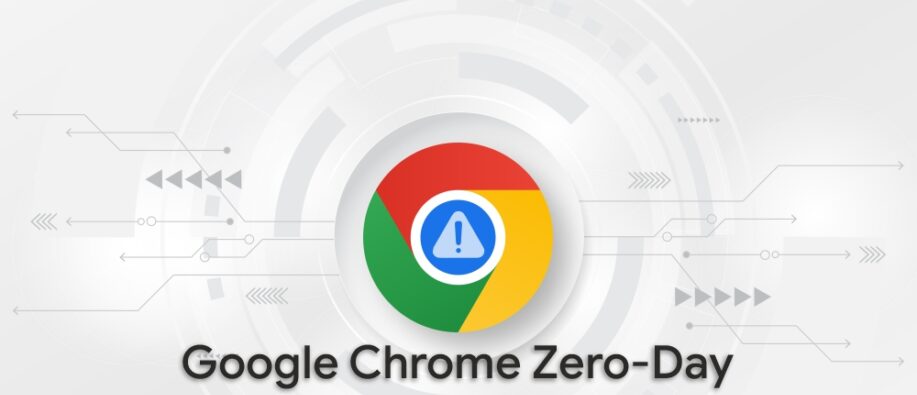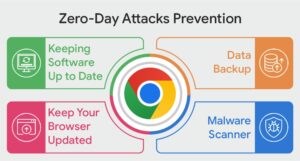Google Chrome stands as the most popular and widely used web browser globally. It powers around 65% of the market, outperforming the other browsers. Moreover, with growing concerns about cyber threats, malware, and phishing, Google Chrome isn’t left behind.
Zero-day vulnerabilities in Google Chrome are among the emerging threats, where hackers exploit flaws before developers have a chance to work on a fix. 2025 is already coming up with vulnerabilities that need to be addressed.
Four vulnerabilities have been tracked so far, with the most recent one being CVE-2025-6654. Therefore, we must begin implementing adequate security measures to prevent such incidents. In this quick guide, explore zero-day vulnerabilities in Google Chrome, including the recent security update and more.
What’s Zero Day Vulnerability in Google Chrome?
A Google Chrome zero-day vulnerability is a security flaw in the Chrome browser that has not yet been fixed. These flaws often appear throughout the development process, and hackers frequently discover them before the Google team does. Thus, the team must act quickly to find the solution before it's too late! Hackers can otherwise exploit the
vulnerability to steal sensitive data.
Now, here’s about Google Chrome’s recent zero-day vulnerability attack.
Google recently shared a security update to patch another zero-day vulnerability in the Chrome browser. This is the fourth flaw that needs to be fixed from the start of this year, with others patched in March, May, and June.
The Recent Zero Day Vulnerability CVE-2025-6654
The zero-day vulnerability (CVE-2025-6654) with a CVSS score of N/A is known to be a confusion flaw in the V8 JavaScript and WebAssembly engine. The type confusion vulnerabilities in the Chrome V8 Javascript engine can lead to significant concerns. Here, remote attackers can perform arbitrary read/write crafted through an HTML page, exploiting the vulnerability. The primary problem is that it can severely compromise the user’s system.
Furthermore, they can be used to cause unexpected software behavior, which in turn can lead to crashing programs and the execution of arbitrary code. The point is that attackers often start with zero-day exploits before a fix is available.
Following are the scenarios that hackers can get into:
- Install malware
- Run malicious code
- Promote a user to visit a rogue website.
- And more
Google has shared a statement regarding Chrome’s zero-day vulnerability, stating that "an exploit for CVE-2025-6554 exists in the wild."
Regarding the identification of the threat, Clement Lecigne of Google Threat Analysis Group (TAG) consists of security experts who work on keeping Google users away from such attacks.
Google takes security seriously, and here, in this scenario, the issue was resolved immediately the next day, with configuration changes moved to the Stable channel across all platforms.
Top Ways to Prevent Zero-Day Vulnerability Attacks?
You cannot surely avoid zero-day attacks, but you can incorporate the proper measures to keep your important data safe in case a zero-day attack targets it.
1. Keeping Software Up to Date
Ensure that all the software you use is updated with the latest versions, security patches, and more. This is the first and foremost step towards a secure and resilient environment.
2. Data Backup
Data is the cornerstone of business. If your data falls into the hands of hackers, is targeted by a cyberattack, or is exploited due to zero-day vulnerabilities, having a backup in place can save you from the hassle. Thus, ensuring regular data backups is more crucial than ever.
3. Keep Your Browser Updated
Google patches Chrome zero-day vulnerabilities as soon as they are discovered. When using an updated version of your web browser, you are protected from possible threats or vulnerabilities. Google Chrome is automatically updated, but you may have to update the other browsers that use Chromium with all the manual procedures.
4. Malware Scanner
It’s evident that malicious actors often exploit zero-day vulnerabilities to disseminate malware. Thus, installing a malware scanner can help you identify and prevent malware downloads.
What are Some of Chrome’s Zero Day Vulnerabilities?
- CVE-2024-7971
Identified in August 2024 and rapidly patched, the flaw allowed for remote code execution, leading to malicious HTML pages with type confusion in JavaScript. - CVE-2025-2783
This issue was first identified in March 2025 through phishing attacks and was patched within weeks to protect users.
Steps to Check if Chrome Browser is Up to Date?
To know your Chrome browser is updated, you can perform the following steps:
First you need to go to Settings > Help > About Google Chrome, where the browser will automatically perform an update check. If you run a business and need to manage multiple devices, it's recommended enabling the auto-update option, which will keep the browser versions up to date.
Moving to the Final Words
In today’s digital world, threats will keep on emerging in some or other forms. Thus, we should prioritize security over everything else! Google Chrome’s Zero-day vulnerability issue is one of the top threats.
In this blog, we have covered everything about the recent CVE-2025-6654 attacks that emerged in July. Regarding this, Google’s V8 engine enables Chrome to remain both speedy and secure. Additionally, V8 runs JavaScript, and thus it becomes a home for bad actors.
Stay tuned with all the cybersecurity in and around related blogs with us!
Frequently Asked Questions
Q1. What is Chrome zero-day May 2025?
Answer: Google Chrome contains a critical zero-day vulnerability (CVE-2025-6554) that has been found and fixed. The V8 JavaScript and WebAssembly engine has a type of confusion vulnerability.
Q2: Is there a Google Chrome vulnerability?
Answer: Yes! A vulnerability has been found in Google Chrome that lets arbitrary code execution.
You Might Also Like: Key Pillars of Google’s Vulnerability Management System






